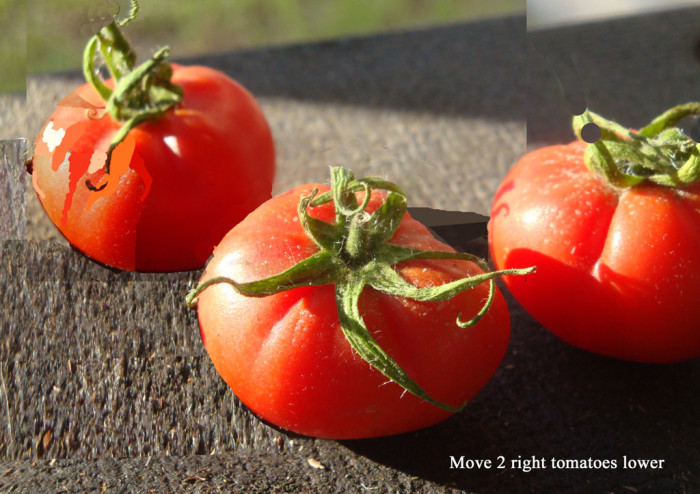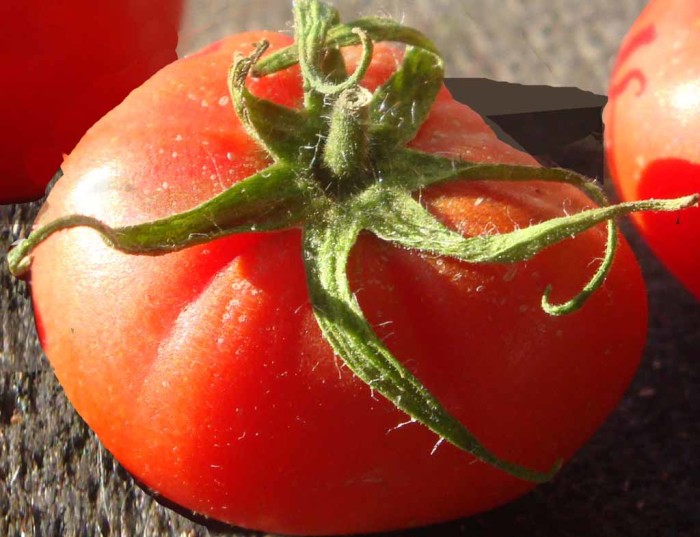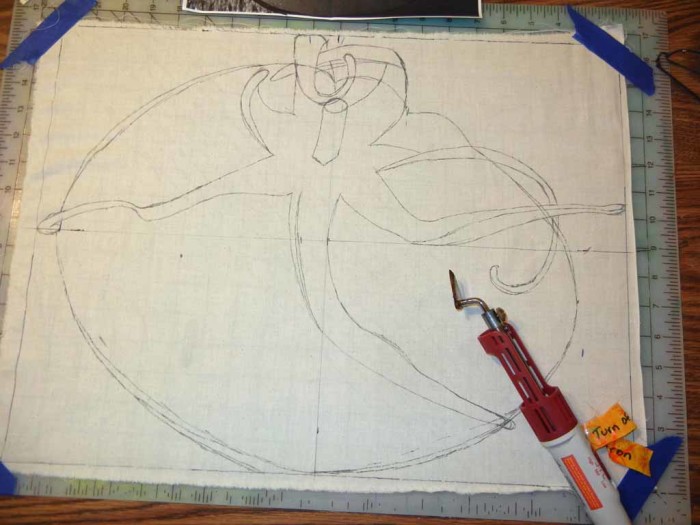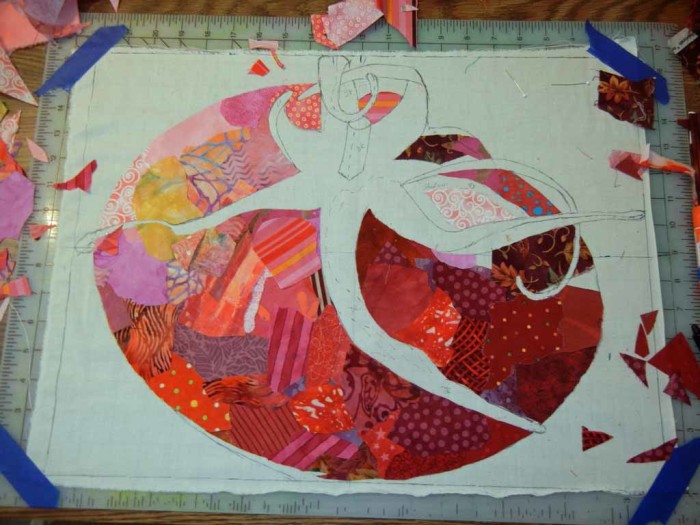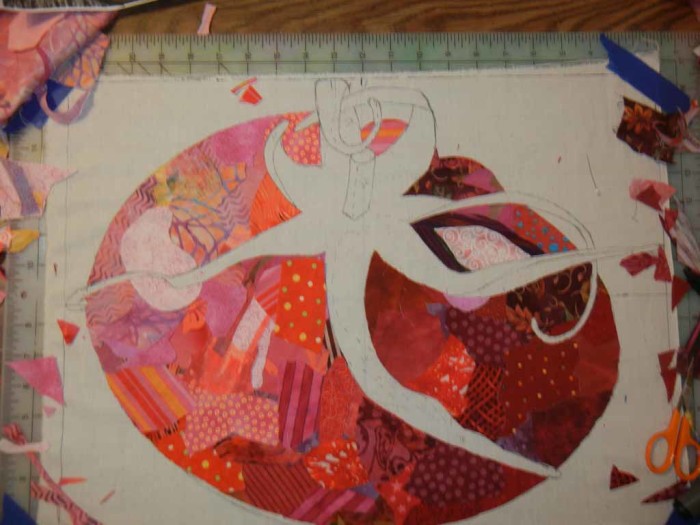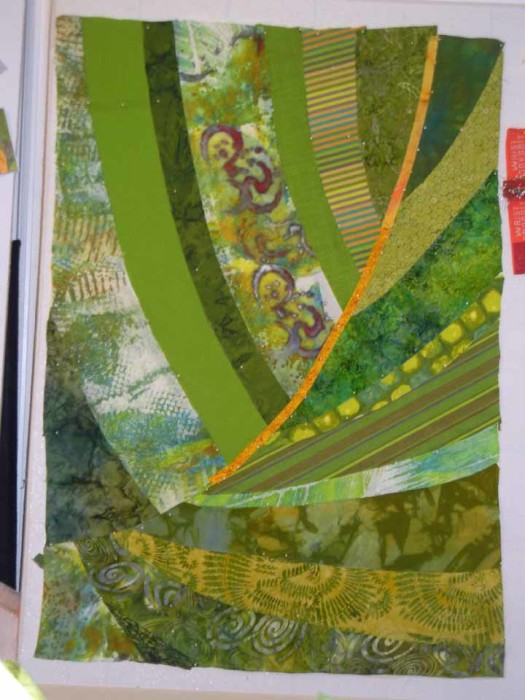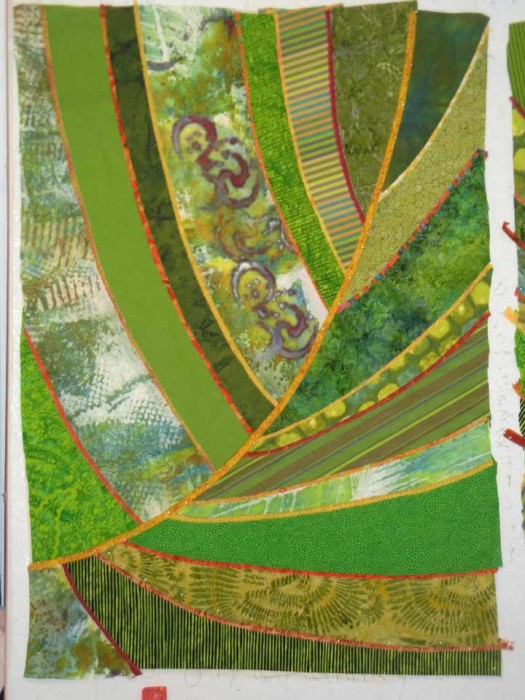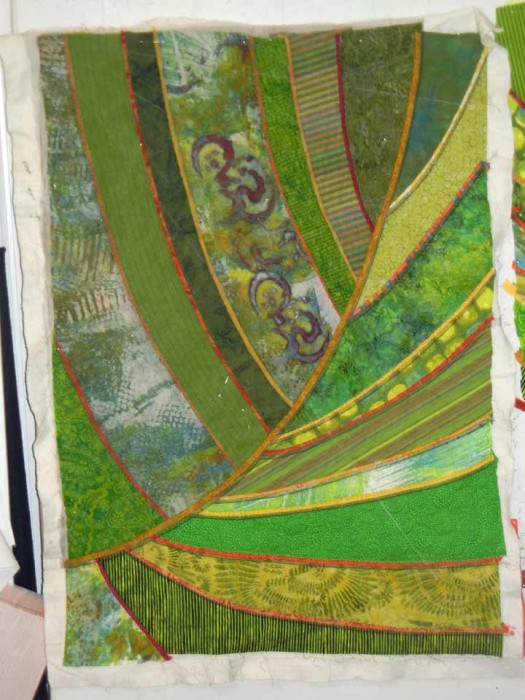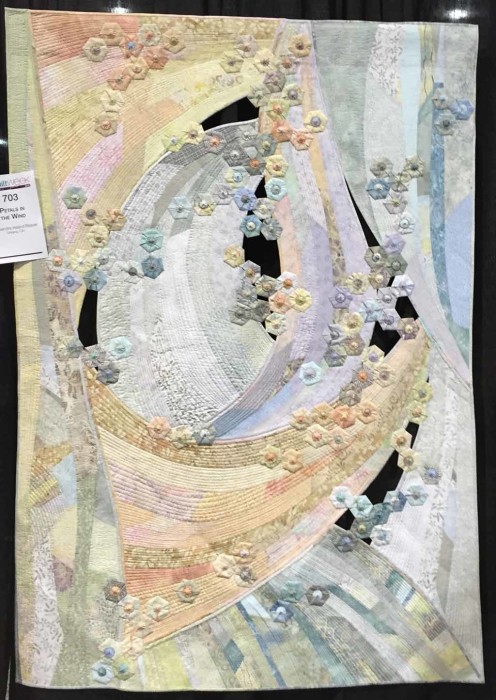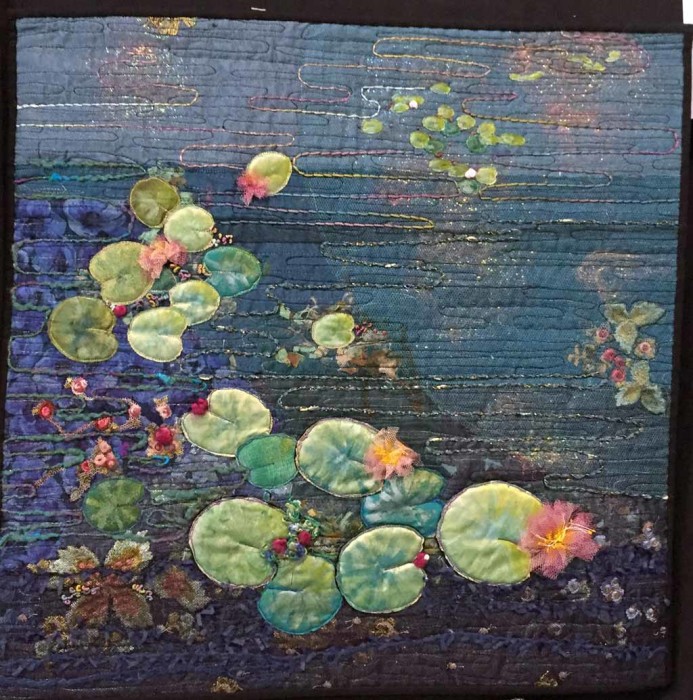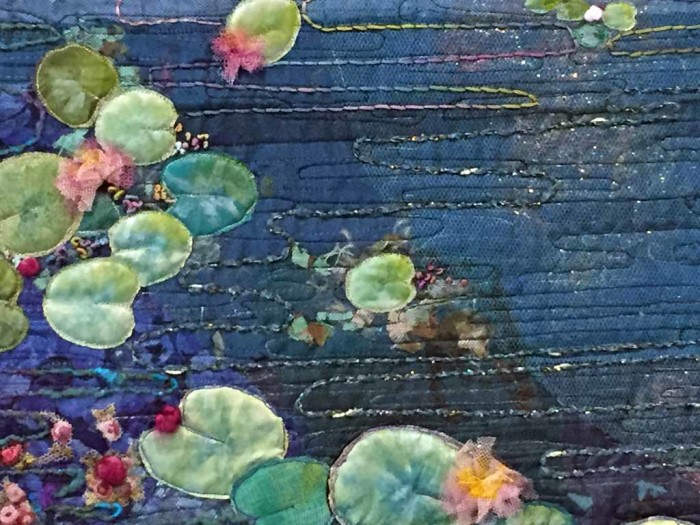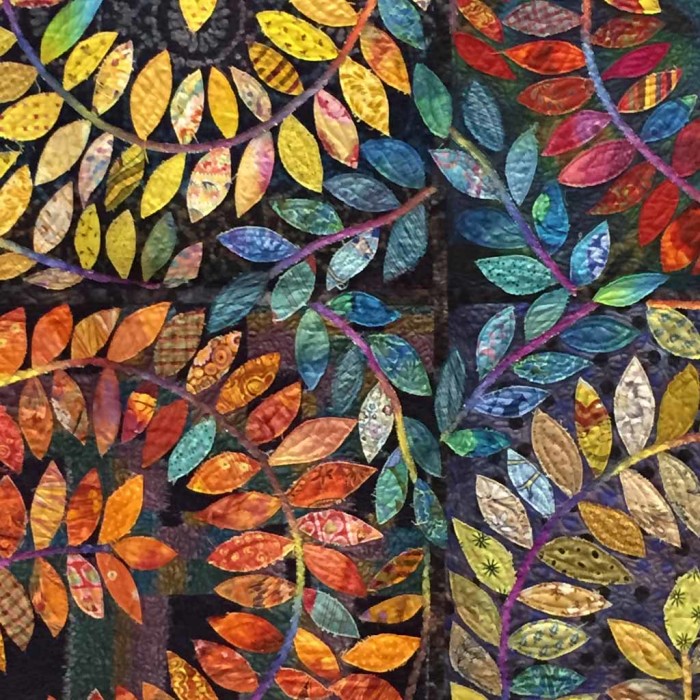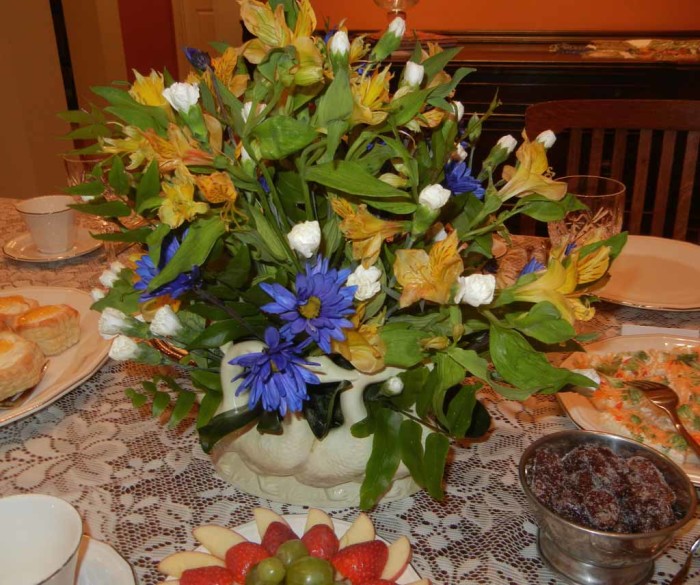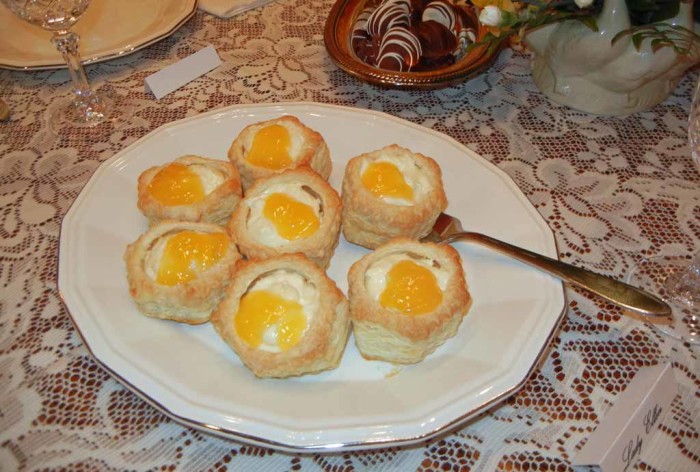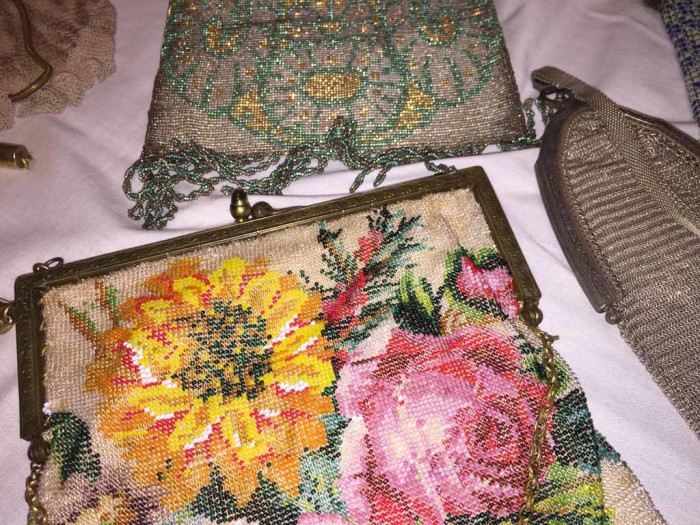What is it about little twisty leaves that add so much character to a simple tomato? I’m not sure, but it’s clear that they’re a wonderful addition. Per Susan Carlson’s instructions, I had left the edges of the red pieces unglued so the green leaf fabrics could slip right under. At least I THOUGHT I had left them unglued. Apparently I got a little carried away with the gluing, making it difficult to add the green. I’ll need to tweak my technique for sure.
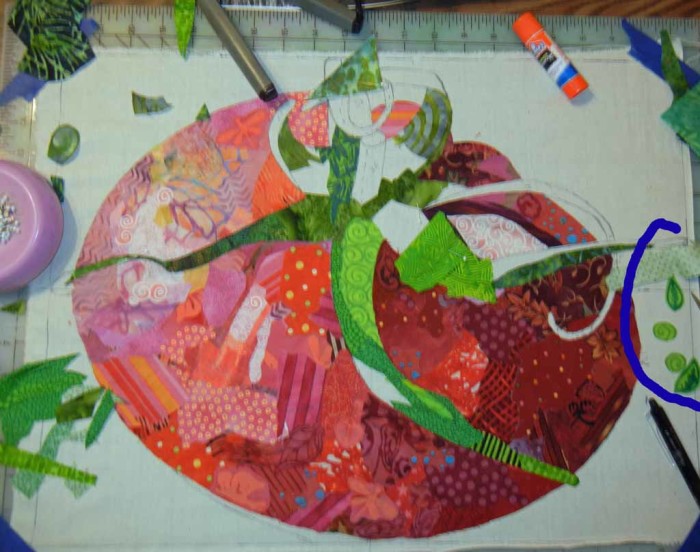
See the blue circled area above? Those are little individual leaf motifs which I’ll use to merge the fabrics. Perhaps you can find a few of them in the next picture.
Here’s what it looked like when I finished the leaves. I’m very pleased with them! They don’t have quite the definition I’d like, but I’ll remedy that with some black outline stitching. (Oops, ignore that out of place red piece on the left.)

Even though I declared this “finished” in the above picture, I did find something that bugged me: the highlight on the right side. I decided it was just too light – causing a very strong contrast in that area. I switched out the dark outer fabric and started fiddling to soften the light center.
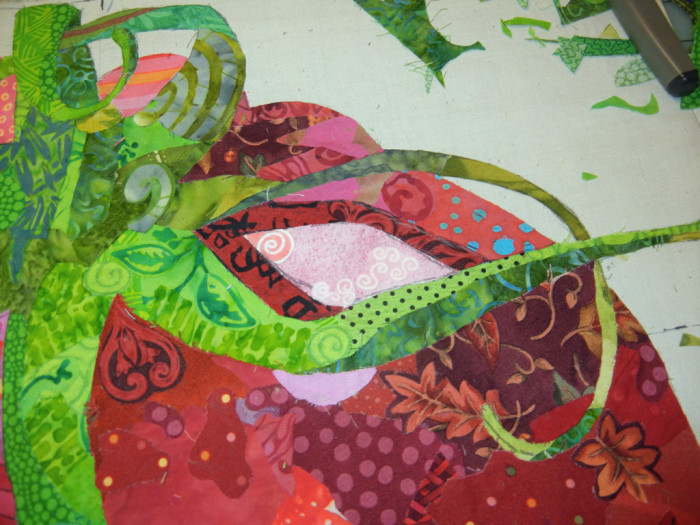
And ended up with this.
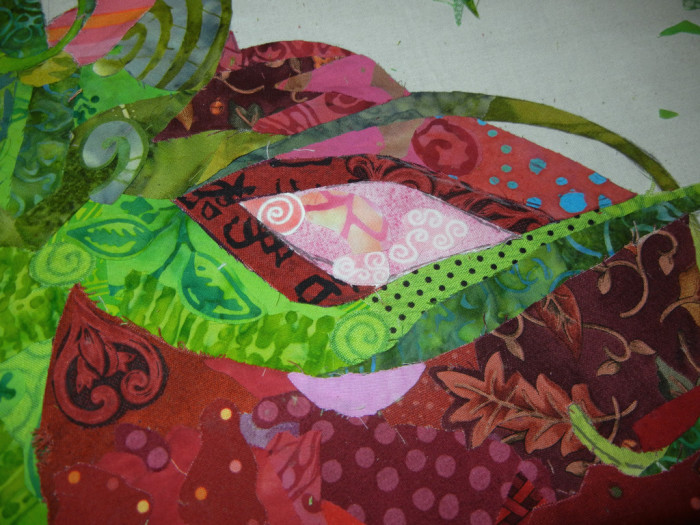
Eventually the pink patch below the highlight also bothered me and I changed it as you can see below.

You can really adjust something like this forever! But, I had my fill after a while.
As you might imagine, all those little snippets go everywhere, making for a messy work station. (Not that mine is ever that neat.)

Having completed this first tomato, I’m assessing the technique.
I like: softening the edges with little overlapping bits of fabric, and working sitting down.
I don’t like: the difficulty tucking tiny green leaf fabrics under the red ones. For the next tomato, I think I’ll apply the leaves on top.
I’m happy with this tomato and fully intend to integrate it into a full composition. But first, I need to get back to my leaf quilts!
Ellen Lindner


